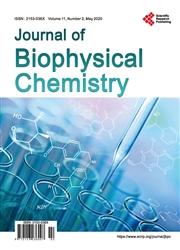Non-Local pH Shifts and Shared Changing Angular Velocity Magnetic Fields: Discrete Energies and the Importance of Point Durations
引用次数: 10
Abstract
Macroscopic productions of “non-locality” or “excess correlations” of dynamic changes within media between two spaces could be utilized as alternative communication systems. Previous experiments have shown that injections of a weak acid within one of two volumes of spring water sharing the same patterned circular magnetic fields with changing angular accelerations separated by non-traditional (5 m) distances were associated with opposite (basic) shifts in pH within the non-injected, non-local volume. In the present experiments, employing a different technology, pairs of beakers separated by 1 m containing either 25 cc, 50 cc, or 100 cc of spring water were placed within toroids generating weak (30, 300 nT) changing acceleration magnetic fields with 1 ms, 2 ms, or 3 ms point durations or a field whose point durations changed. When a proton source (weak acid) was injected into one beaker (local) pH shifts in the other (non-local) beaker exhibit increased acidity for the 3 ms point duration but increased alkalinity for the 1 ms duration. Neither intermittent point durations nor variable point durations for the same volumes of water placed between the two magnetic field-coupled beakers exhibited significant changes from baseline. Contingent upon the point duration of the applied field, the pH shift was consistent with a fixed quantity of decreased free protons (increased pH) or increased protons (decreased pH) in the non-local beakers. The opposite directions of the pH shifts at 1 ms and 3 ms that correspond to quantitative cosmological solutions for electrons and protons suggest these results may reflect a fundamental physical process.非局部pH位移和共享变化角速度磁场:离散能量和点持续时间的重要性
在两个空间之间的媒介中动态变化的“非局域性”或“过度相关性”的宏观生产可以用作替代通信系统。先前的实验表明,在两卷泉水中的一卷中注入弱酸,这些泉水具有相同的圆形磁场,并且以非传统(5米)距离分隔角加速度变化,在未注入的非局部体积中,pH值会发生相反的(基本的)变化。在目前的实验中,采用了一种不同的技术,将含有25cc, 50cc或100cc泉水的一对烧杯放置在环形管内,产生微弱(30,300 nT)变化的加速磁场,其点持续时间分别为1ms, 2ms或3ms,或点持续时间发生变化的场。当质子源(弱酸)注入一个烧杯(局部)时,另一个烧杯(非局部)的pH值变化在3ms点持续时间内表现出酸性增加,但在1ms持续时间内碱性增加。对于放置在两个磁场耦合烧杯之间的相同体积的水,间歇点持续时间和可变点持续时间都没有显示出与基线相比的显着变化。根据施加电场的点持续时间,pH值的变化与非局部烧杯中固定数量的自由质子减少(pH值增加)或质子增加(pH值降低)一致。对应于电子和质子的定量宇宙学解的1 ms和3 ms的pH位移方向相反,表明这些结果可能反映了一个基本的物理过程。
本文章由计算机程序翻译,如有差异,请以英文原文为准。
求助全文
约1分钟内获得全文
求助全文

 求助内容:
求助内容: 应助结果提醒方式:
应助结果提醒方式:


